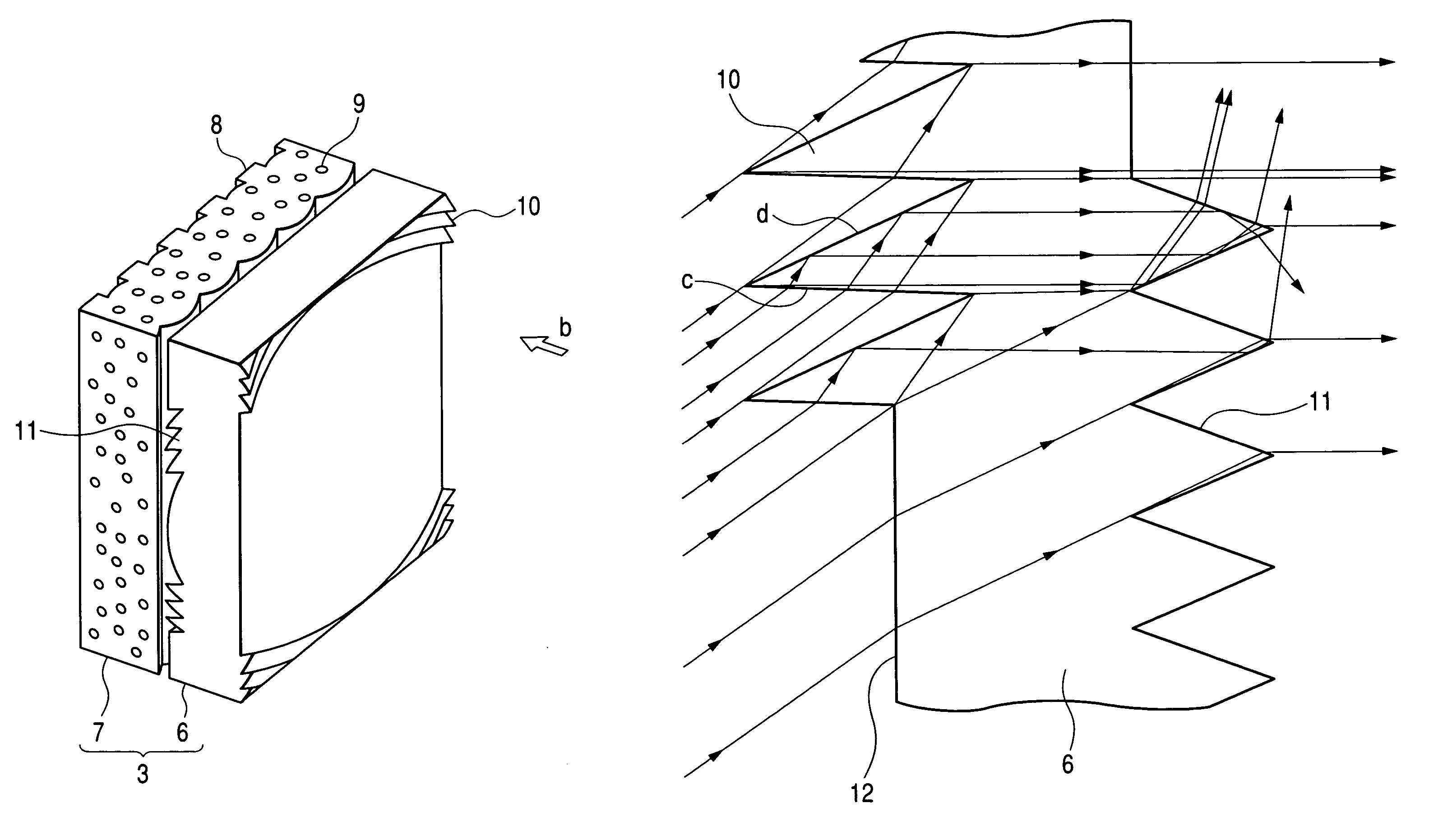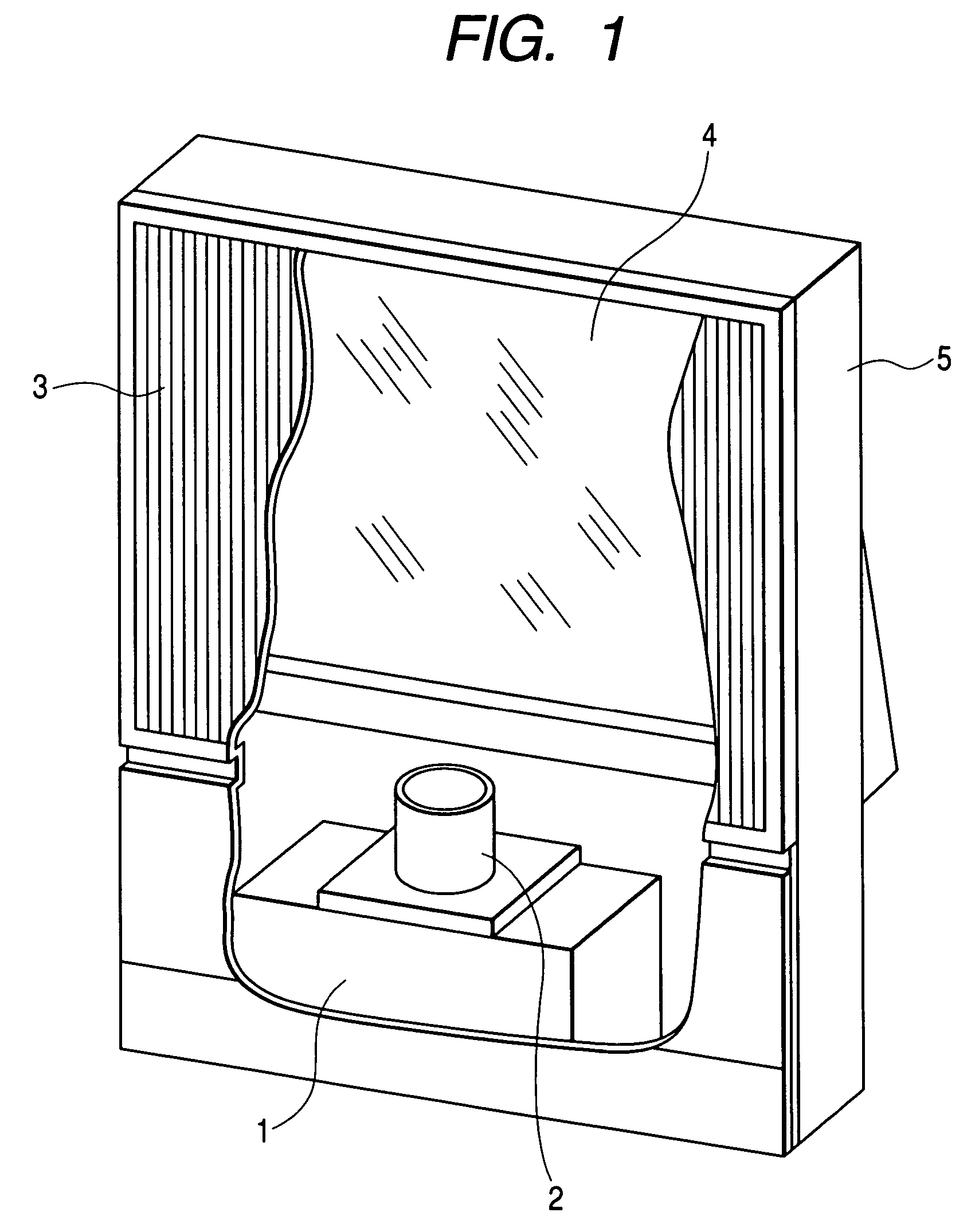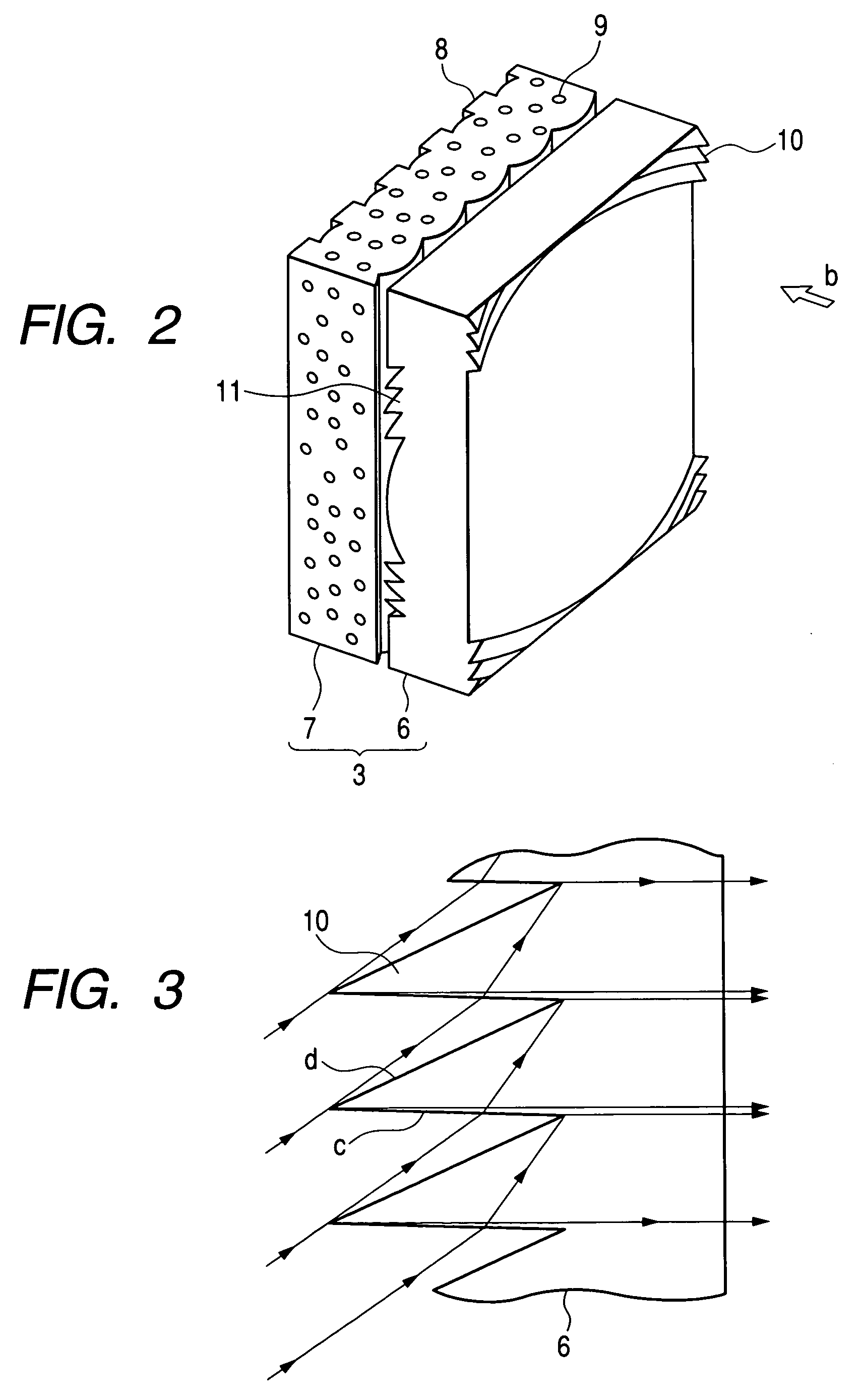Image display device, rear projection type screen used in image display device, Fresnel lens sheet, and method of making Fresnel lens sheet
a technology of image display device and lens, which is applied in the direction of instruments, mountings, projectors, etc., can solve the problems of large loss, limited widening of lens field angle, image display device darkening at right and left upper end, etc., and achieve the effect of reducing the thickness of image display devi
- Summary
- Abstract
- Description
- Claims
- Application Information
AI Technical Summary
Benefits of technology
Problems solved by technology
Method used
Image
Examples
first embodiment
[0040]An image display device according to a first embodiment of the present invention will be described in detail hereinunder with reference to the accompanying drawings.
[0041]FIG. 1 is a partially sectional perspective view of the image display device. An image generation source 1 includes a projection type cathode-ray tube, a reflection or transmission type liquid crystal panel, and an image modulator such as a display element provided with a plurality of very small mirrors. The image generation source 1 displays a small-sized image. A projection lens 2 projects the image onto a rear projection type screen 3. Since the projection distance is generally long, a reflecting mirror 4 is disposed in a related optical path for diminishing the depth of the image display device. These components are fixed at respective predetermined positions in the interior of a case 5.
[0042]FIG. 2 is a schematic diagram showing the structure of the rear projection type screen 3 used in the first embodim...
second embodiment
[0053]A second embodiment of the present invention will be described below with reference to the accompanying drawings.
[0054]FIG. 11 is a schematic diagram showing the structure of a rear projection type screen 3 according to the second embodiment. An enlarged projection image (not shown) projected in the direction of arrow b is converted to light which is substantially parallel or light which somewhat faces inwards while passing through a Fresnel lens 6. Then, the converted light is incident on a lenticular lens sheet 7. As shown in the same figure, the lenticular lens sheet 7 has a shape such that plural lenticular lenses having a longitudinal direction vertically of the screen are arranged horizontally of the screen. The lenticular lens sheet 7 functions to diffuse the image light horizontally of the screen. Black stripes 8 extending vertically of the screen are formed on an exit surface of the lenticular lens sheet 7 to absorb extraneous light which is incident from the exit sid...
PUM
 Login to View More
Login to View More Abstract
Description
Claims
Application Information
 Login to View More
Login to View More - R&D
- Intellectual Property
- Life Sciences
- Materials
- Tech Scout
- Unparalleled Data Quality
- Higher Quality Content
- 60% Fewer Hallucinations
Browse by: Latest US Patents, China's latest patents, Technical Efficacy Thesaurus, Application Domain, Technology Topic, Popular Technical Reports.
© 2025 PatSnap. All rights reserved.Legal|Privacy policy|Modern Slavery Act Transparency Statement|Sitemap|About US| Contact US: help@patsnap.com



